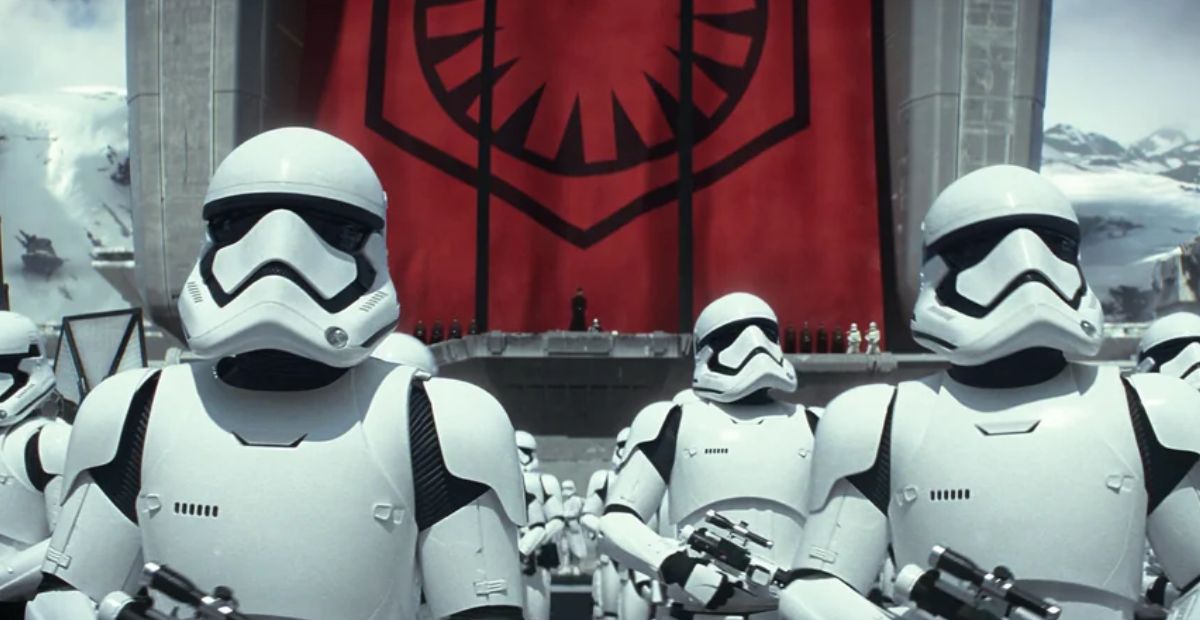We can appreciate Andor for its originality. With the completion of Season 2, this series has garnered accolades for reviving and restoring the Star Wars franchise. The Mandalorian and Ahsoka also helped the Disney era, but Andor surpassed them with its creative edge. Yet, on the flip side, we may also realize how Andor makes the sequels look even worse. This innovative show that wrapped back into Rogue One broadcasts the shortcomings of such categories as a meaningful rebellion, politics, original characters, and conflicts.
A Rebellion Lost
As a post on this discussion stated, Andor helped us see “how hard it was to build a rebellion.” All the sacrifices and struggles of the growing resistance to Imperial tyranny were successfully conveyed. And, as another post suggested, the series helped support the original movies by indicating “just why the Death Star [was] important” for control over the galaxy.
These elements of the show feed into the eventual triumph of the Rebels in Return of the Jedi.
However, the sequels undermined the efforts of “ordinary people” to liberate the galaxy. The quick demise of the New Republic to the threat of the First Order was too rapid and gave a sense that the events of Andor and the original trilogy were “in vain.”
As comments here indicate, the basis for the Resistance was flawed, as the Rebellion succeeded in overthrowing the Empire. The First Order should have been the Rebels, but were portrayed as if they had already renewed their reign over the galaxy.
Intriguing Politics
Another post on the first Reddit discussion above credits The Last Jedi for being “the only one of the trilogy that even tries to address what a rebellion really is”, but another one adds how this sequel didn’t “go nearly far enough with its politics.” Between these two comments is a reflection of the viability of exploring the internal political dynamics of the Rebellion and Empire, something that Andor excelled at.
After the first season, the politics of Andor even captured the attention of mainstream news. The building Rebellion slipped into discussions about current-day conflicts and fights for freedom. Those parallels testify to the strength of the series and a lost opportunity with the sequels.
Original Versus Unoriginal Characters
Whereas the sequels copied the original films and even brought back the Emperor, Andor delved into new characters. Just a quick look at this top ten list of best characters before the second season helps us realize the lost potential of original characters.
We may agree that Dedro Meero is “perhaps the most interesting character” for “breaking the typical Empire stereotypes” and reflecting human characteristics like “initiative, drive, [and] awareness,” but Luthen Rael earns the top spot. This character delivers “the underbelly of the Rebellion,” who is willing to do whatever it takes to push the movement forward.
In contrast, the sequels mainly deliver uninspiring, rote characters summed up from pages already written. Not only do Rey, Finn, and Poe serve as “the new Star Wars trio to parallel the original heroes”, but the films also provide a declining character arc for Finn and Poe. By The Rise of Skywalker, the action shifted to just Rey and Kylo, and Finn and Poe fell to the wayside.
Instead of inspiring, realistic, and powerful characters, the three films mainly provided underwhelming and unfilled ones.
Copying the Conflicts
Focusing on the Starkiller base showed a lack of originality too and a copying of the original movies by making a Death Star III. This plot device was already uninspiring, but after watching two seasons of Andor we realize that it was quite possible to come up with new types of conflict and threats.
As this discussion reveals, fans have been puzzled over the choice of a Starkiller base. We see an extension of the Tarkin Doctrine and not anything new to appeal to audiences. While we could justify this move with the premise that it was being built at the same time as Death Star II, it seems that we could have moved in a new direction.
Reviving the Emperor as the primary orchestrator of the conflict with the Resistance reflects both lazy writing and (again) undermines what Andor through the originals established. In this case, using Sidious again reflects not only a depletion of ideas but also takes from Vader’s redemption.
As this article contends, perhaps we could have delved into “the rise of factions” competing to “fill the power vacuum” that arose with the fall of the Empire. That premise would have resonated with the politics of intrigue that Andor captured and even had some splinter factions similar to Saw Guerrera’s group that turned to the underworld.
Andor and the Sequels
We can appreciate the success of Andor and what it means for Star Wars. Yet, we can also see how this series shows how the sequels could have been more original and inspiring. At a minimum, the three movies after Return could have served to bolster what had come before, not diminish it.

